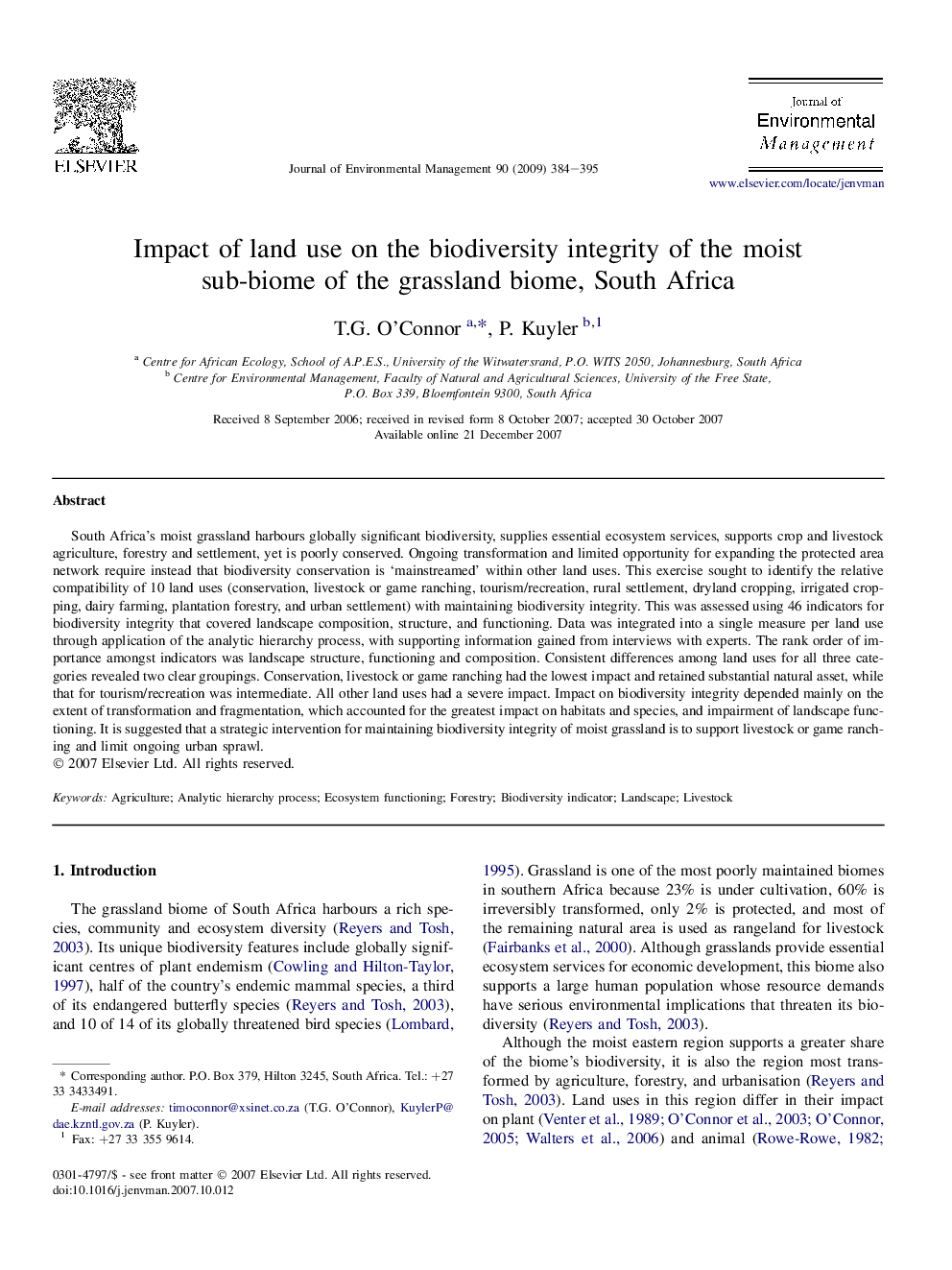| Article ID | Journal | Published Year | Pages | File Type |
|---|---|---|---|---|
| 1058105 | Journal of Environmental Management | 2009 | 12 Pages |
South Africa's moist grassland harbours globally significant biodiversity, supplies essential ecosystem services, supports crop and livestock agriculture, forestry and settlement, yet is poorly conserved. Ongoing transformation and limited opportunity for expanding the protected area network require instead that biodiversity conservation is ‘mainstreamed’ within other land uses. This exercise sought to identify the relative compatibility of 10 land uses (conservation, livestock or game ranching, tourism/recreation, rural settlement, dryland cropping, irrigated cropping, dairy farming, plantation forestry, and urban settlement) with maintaining biodiversity integrity. This was assessed using 46 indicators for biodiversity integrity that covered landscape composition, structure, and functioning. Data was integrated into a single measure per land use through application of the analytic hierarchy process, with supporting information gained from interviews with experts. The rank order of importance amongst indicators was landscape structure, functioning and composition. Consistent differences among land uses for all three categories revealed two clear groupings. Conservation, livestock or game ranching had the lowest impact and retained substantial natural asset, while that for tourism/recreation was intermediate. All other land uses had a severe impact. Impact on biodiversity integrity depended mainly on the extent of transformation and fragmentation, which accounted for the greatest impact on habitats and species, and impairment of landscape functioning. It is suggested that a strategic intervention for maintaining biodiversity integrity of moist grassland is to support livestock or game ranching and limit ongoing urban sprawl.
